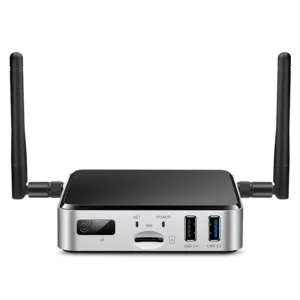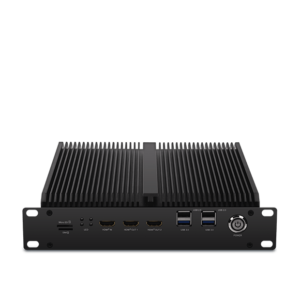AI on Edge Devices vs. Cloud AI: Benefits and Cons
AI on Edge Devices vs. Cloud AI: Benefits and Cons
Blog Article
Unlocking the Power of AI on Side Devices
Real-World Applications of AI on Edge Products
Synthetic intelligence (AI) is no longer restricted to the sphere of big, centralized information centers. Because of developments in technology, side products today play a key role in deploying AI straight wherever data is generated. But what does AI on side devices suggest, and why is it making this kind of thrill? Here, we'll examine how edge ai hardware runs in real life through side devices and reveal their wide variety of realistic applications.

What is AI on Edge Devices?
AI on edge units refers to deploying artificial intelligence algorithms entirely on products like smartphones, cameras, drones, or IoT sensors. These devices do not want usage of centralized hosts for processing information; as an alternative, they accomplish evaluation and conclusions locally, creating the method faster, more efficient, and often more secure.
The "edge" here simply refers to research performed close to or at the foundation of information era, in place of counting on the cloud. That shift is pushed by the demands for real-time information running and the need to decrease latency, enhance privacy, and reduce bandwidth usage.
Critical Real-World Applications of Edge AI
1. Wise Surveillance
AI-powered cameras built with facial recognition, action detection, and anomaly detection are transforming surveillance systems. Edge devices in that domain may analyze video revenues in real-time to recognize dubious actions, eliminate fake alarms, and increase public safety. For instance, AI formulas can detect unusual activities and alert authorities immediately without the need to deliver movie data to a main machine for analysis.
2. Healthcare Checking
Wearable units and portable medical gear are leveraging m.2 ai accelerator for handling wellness information more efficiently. Edge-based AI in units like wellness trackers and smartwatches watches users' vitals, such as for instance heart rate, oxygen degrees, or blood force, in real-time. These techniques analyze data domestically and give instantaneous feedback, paving the way in which for quicker treatment during emergencies.
Beyond wearables, sophisticated medical imaging units designed with on-device AI may identify signs of diseases like cancer, permitting earlier in the day diagnoses even yet in rural parts without web connectivity.
3. Autonomous Cars
Self-driving vehicles are among the absolute most well-known examples of edge AI in action. With detectors, cameras, and LiDAR programs serving as information resources, AI computations take place onboard these vehicles to make split-second decisions. From detecting pedestrians and obstacles to moving city streets, edge AI ensures that the automobile works reliably and efficiently. The real-time running capability of edge units reduces the reliance on high-latency cloud programs, ensuring protection in life-critical scenarios.
4. Retail Analytics
Side units in retail situations are helping corporations analyze customer behavior. Clever shelves and AI-equipped cameras can discover client tastes, check stock, and also modify in-store activities in real time. The information produced from these units helps merchants produce knowledgeable choices, increase customer satisfaction, and enhance stock management.

5. Industrial IoT
Factories and professional plants are adopting side AI to revolutionize their checking and automation processes. AI-powered sensors on equipment identify potential faults long before they result in expensive failures. Predictive preservation pushed by side AI reduces downtime, increases productivity, and assures protection on the production floor.
6. Personalized Activities in Client Units
Your smartphone is a prime example of how side AI personalizes individual experiences. Characteristics such as style assistants, flexible camera options, and on-device language interpretation use real-time AI to respond to consumer wants without giving sensitive and painful knowledge to additional servers. That fosters equally comfort and solitude for the end user.
The Growing Impact of Side AI
The ownership of AI on side units remains to rise, pushed by industries' raising need for low-latency, real-time computing, and greater data privacy. Its purposes are reshaping industries which range from healthcare and automotive to community security and retail. By putting AI's power closer to where knowledge is made, side products are not only increasing efficiency but in addition showing the limitless potential of development in the present attached world. Report this page